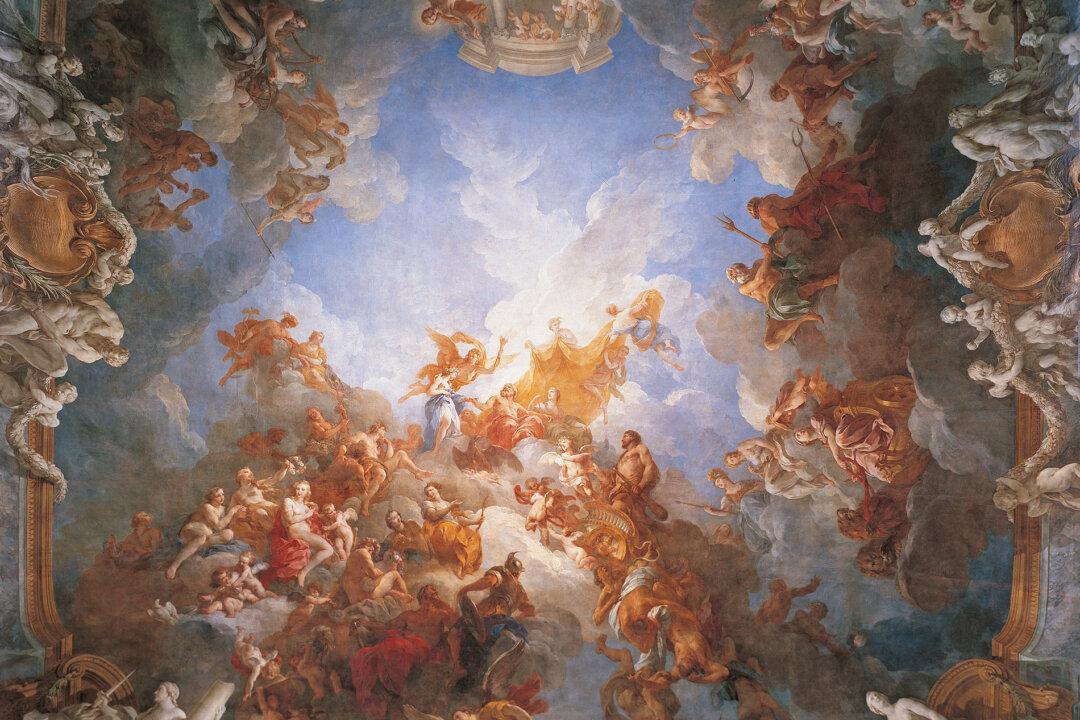Who do we remember as the greatest ancient hero of them all? Hercules. Legend says that the gods honored him for his achievements by granting him apotheosis, or ascendance to the heavens. The powerful 17th and 18th century French kings commissioned magnificent art, including a ceiling painting to celebrate the achievements of the renowned hero and pay homage to the virtues inherent in his character.
François Lemoyne took four years to complete “The Apotheosis of Hercules” on the ceiling of the Salon of Hercules at the Palace of Versailles. When the artist began the mural, he had already been trained in the best techniques of Italian painting in Paris at Louis XIV’s Royal Academy of Painting and Sculpture. The purpose of the academy was to gather, preserve, and perfect the classical arts.

